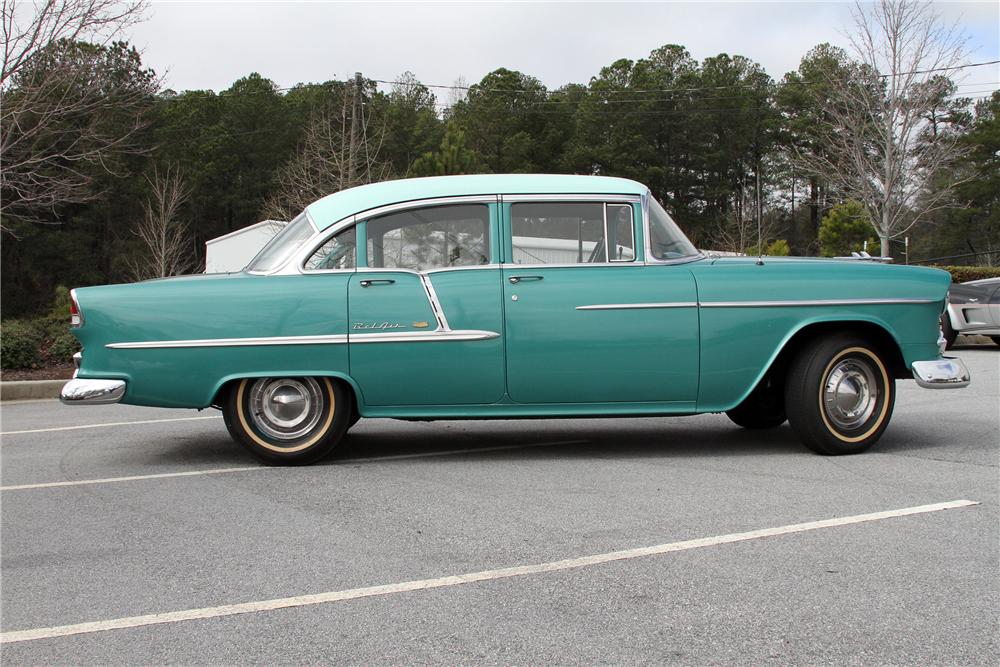The best looking four-door cars, according to you
The prevailing opinion within the collector car world is that two-doors hold higher value and desirability, but when we asked for your favorite four-door on the Hagerty Forums last week, we received some impassioned responses—over 100, in fact. Here are six that received multiple nominations.
1979–93 Jaguar XJ

Featuring a Pininfarina design, the Series III XJ models make four doors look good. Over the course of production, buyers could choose between a 3.4-liter or 4.2-liter inline-six, along with the 5.3-liter V-12. The simple design has held up well with time, although the engines sometimes sideline these cars due to maintenance cost. Some owners remedy the issues by exchanging the six for a small-block Chevrolet V-8, but that swap is certainly not for everyone.
1955 Chevrolet Bel Air

Tri-five Chevrolets gained their nickname by the relatively-unchanged appearance of the 1955, ’56, and ’57 models. The top-tier Bel Air is easily identified by the additional exterior trim it carried compared to the 210 and 150 models. Available in seven different body styles, the Tri-fives fit the needs of virtually any buyer. These shoebox Chevys have a place in the hearts of car folks the world around with their timeless design, accurately capturing the nostalgia of many vintage car buyers in the U.S.
1985–86 Mercedes 190E 2.3-16 Cosworth

The base 2.3-liter engine in the 190E might be enough for many, but some wanted more. This desire for speed led to Mercedes partnering with tuning company Cosworth, which bolted a cylinder head featuring four-valves-per-cylinder on top of the inline-four. Producing 185 horsepower in European spec, the 190E 2.3-16 was a nod to the DTM race cars that were capturing hearts and minds with their curb-hopping antics.
1961–67 Lincoln Continental convertible

If searching for a slab-sided beauty, look no further than Lincolns of the 1960s. Lincoln only built the Continental in a four-door layout from 1961 to a refresh in ’66, which brought a two-door model to the lineup. It managed to keep the relatively short 123-inch wheelbase by utilizing the now infamous “suicide” rear doors. The hardtop was hardly svelte, and convertible models gained an additional 300 pounds underneath, thanks to the bracing required on the chassis to prevent flexing while driving. We say it’s worth the weight penalty.
1972 Mercedes 280SEL

Mercedes-Benz nomenclature was pretty clear and concise prior to the 1960s, which is when it became a bit confusing. The 280S, 280SE, and 280SEL came about in 1968 with the introduction of a 2.8-liter inline-six, leaving the 250S and 250SE behind. Other engines were eventually offered in the 280 lineup, making for murky waters when identifying models. All 280s featured Bosch fuel injection and four-wheel disc brakes, making as nice to drive as they are to look at.
1965 Chevrolet Corvair

The first year of the redesigned Corvair, 1965 took the rounded and shapely 1961–64 Corvair and gave it angles. The handsome and economical hardtop four-door lacked a B-pillar to break up the open greenhouse created by thin A-pillars. The rear engine placement allowed for a flat floor and plenty of legroom for driver and passengers. Sharp buyers opted for the second most powerful Corvair engine, the 140-hp version, and four-speed manual transmission, effectively creating a sport sedan. Features such as four-wheel independent suspension and light-for-the-era overall weight of 2385 pounds only increased the fun-factor.

